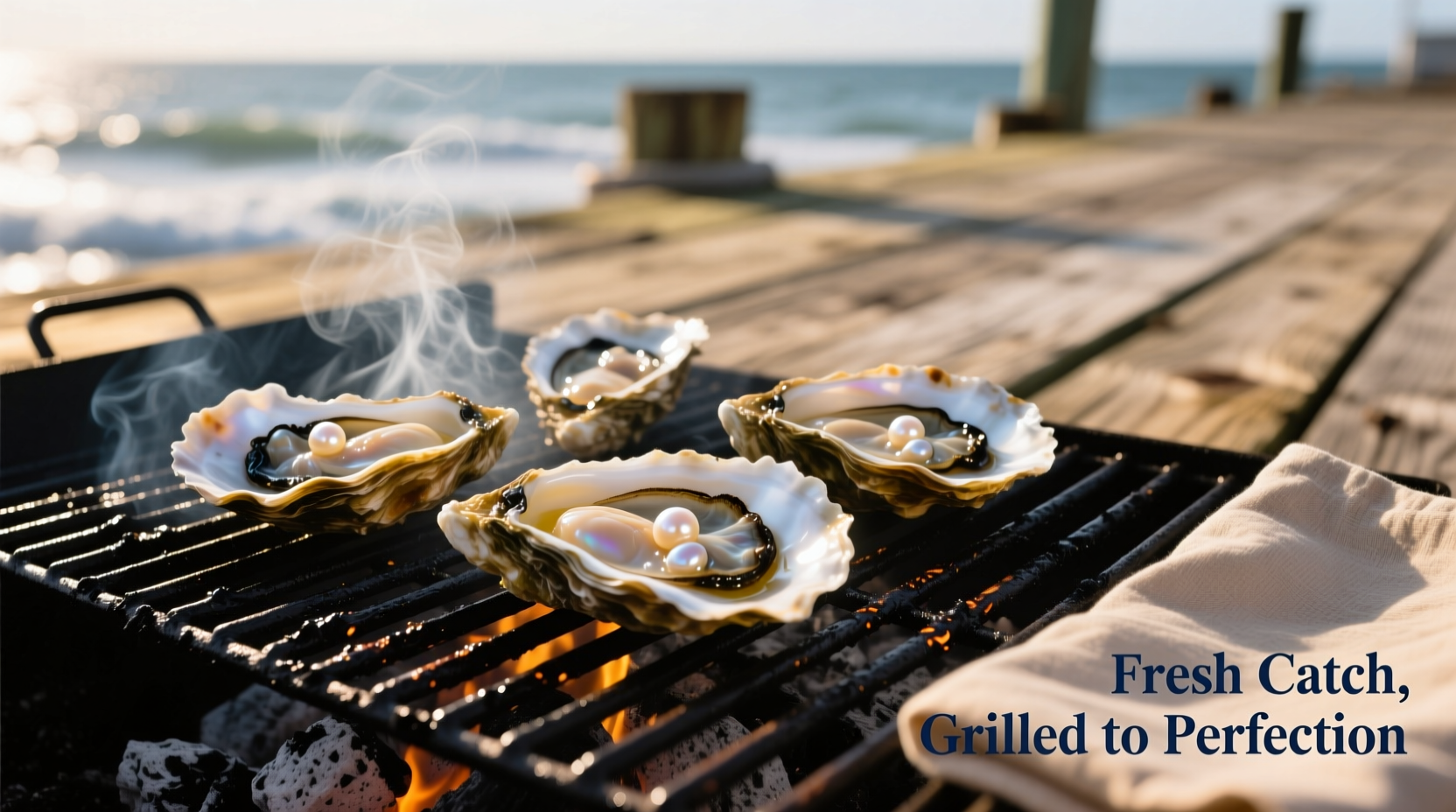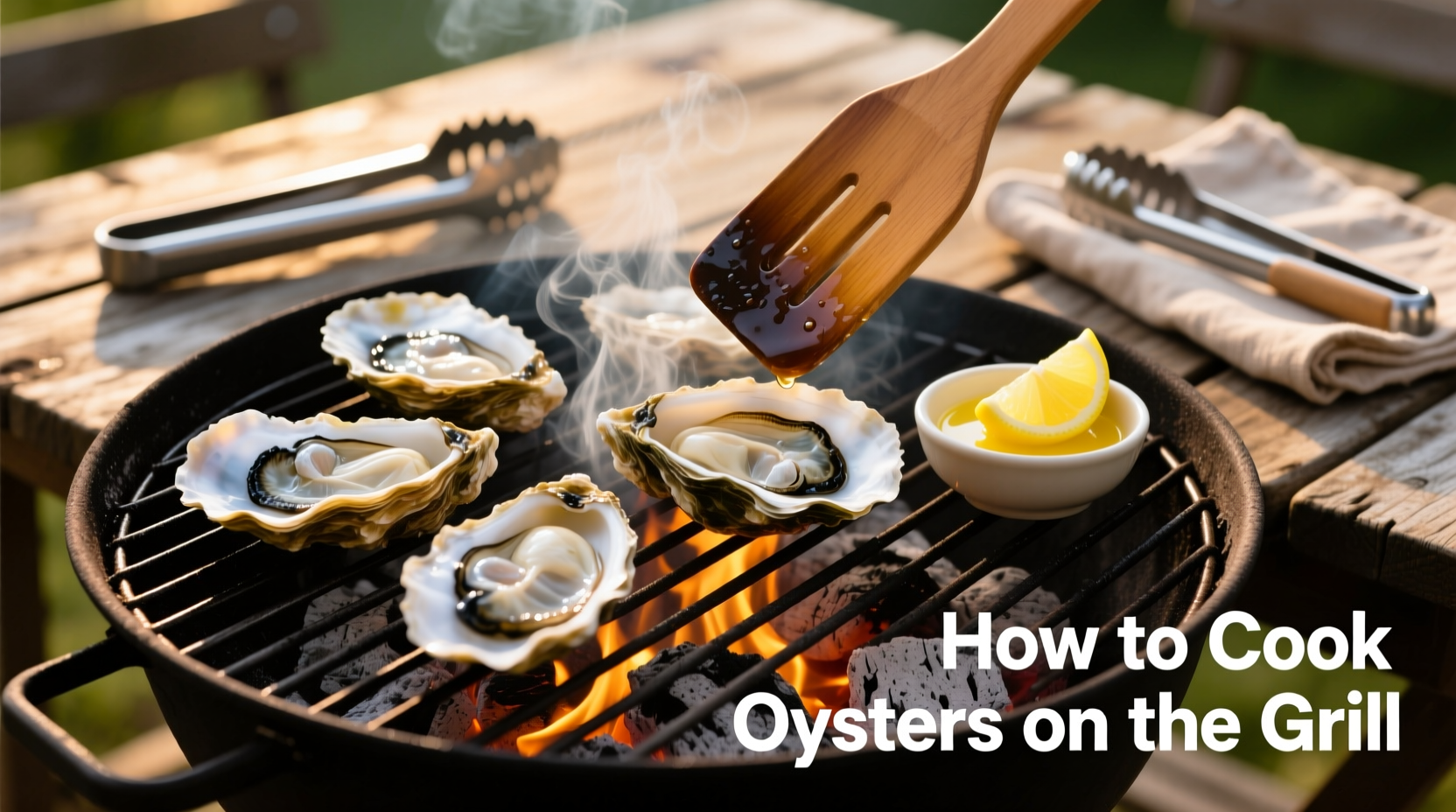Master the Art of Grilling Oysters in Minutes
There's nothing quite like the smoky, briny perfection of freshly grilled oysters. Unlike other seafood, oysters transform dramatically over open flame, developing a delicate chew while retaining their ocean essence. The best part? You don't need special equipment or culinary training—just fresh oysters and a working grill. This guide delivers professional results whether you're hosting a backyard gathering or preparing a quick weeknight treat.
Why Grilling Beats Other Oyster Preparation Methods
Grilling oysters offers distinct advantages over steaming, frying, or raw consumption. The direct heat creates complex Maillard reactions that enhance natural sweetness while the shell acts as a natural steamer, preserving moisture. According to NOAA's seafood handling guidelines, grilling also reduces food safety risks compared to raw consumption since the internal temperature quickly reaches safe levels.
Your Oyster Selection Checklist
Not all oysters perform equally on the grill. Choose varieties with deep, cupped shells that hold their liquor (the natural juice inside). Popular grilling varieties include:
- Atlantic oysters (Blue Point, Wellfleet) - Balanced brininess
- West Coast varieties (Kumamoto, Olympia) - Sweeter profile
- Gulf oysters (Gulf Coast) - Larger size, milder flavor
Inspect each oyster before cooking—discard any with cracked shells or that feel unusually light, as these indicate dead or spoiled oysters. Fresh oysters should smell like the ocean, not fishy or sour.
Essential Preparation Steps
Proper preparation prevents common grilling disasters. Follow these steps for success:
- Clean thoroughly - Scrub shells under cold water with a stiff brush
- Chill before grilling - Keep on ice until ready to cook (critical for shell integrity)
- Arrange properly - Place cupped side down to retain precious liquor
- Prep accompaniments - Mix garlic butter or lemon wedges in advance
Unlike other cooking methods, you don't need to shuck oysters before grilling. The heat naturally separates the adductor muscle from the shell. Attempting to shuck beforehand often leads to dry, overcooked results.
| Grill Temperature | Cooking Time | Visual Doneness Cues |
|---|---|---|
| 375°-400°F | 10-12 minutes | Edges curl slightly, shells pop open |
| 400°-450°F | 8-10 minutes | Liquor bubbles vigorously, shells separate |
| Below 350°F | 15+ minutes | Risk of rubbery texture, liquor evaporates |
The Perfect Grilling Technique
Follow this professional method for consistently excellent results:
- Preheat your grill to medium-high (375°-450°F) with two-zone cooking
- Arrange oysters directly on the grate, cupped side down
- Cook covered for 8-12 minutes until shells begin to open
- Remove immediately when shells pop open (don't force closed ones)
- Discard any that haven't opened after 15 minutes
For enhanced flavor, add wood chips like hickory or applewood during preheating. The FDA recommends cooking oysters to an internal temperature of 145°F (63°C) for food safety, which typically occurs when the edges curl slightly.

When Grilling Isn't the Right Choice
While grilling works beautifully for most oysters, certain situations warrant alternative preparation methods:
- Warm weather storage - If oysters have been above 40°F for more than 2 hours
- Pre-shucked oysters - Already opened oysters will dry out on the grill
- Very small varieties - Tiny oysters (less than 1.5 inches) overcook easily
- Delicate varieties - Some Pacific oysters benefit from gentler steaming
Serving Suggestions That Impress
Elevate your grilled oysters with these chef-recommended pairings:
- Classic preparation - Melted butter with lemon wedges and cracked pepper
- Garlic herb butter - Blend softened butter with minced garlic, parsley, and a splash of white wine
- Cajun style - Top with diced bacon, green onions, and Cajun seasoning
- Asian fusion - Drizzle with soy-ginger sauce and toasted sesame seeds
For presentation, serve oysters on a bed of rock salt to keep them stable. The USDA recommends consuming grilled oysters immediately after cooking for optimal texture and safety.
Troubleshooting Common Grilling Issues
Even experienced grillers encounter these challenges:
- Oysters won't open - Likely dead before cooking; discard immediately
- Dry or rubbery texture - Overcooking or grill temperature too high
- Burning shells - Move to cooler part of grill; reduce heat
- Uneven cooking - Rotate oysters halfway through cooking time
Remember that oysters continue cooking slightly after removal from heat. Pull them just before they reach perfect doneness to avoid toughness.
Food Safety Essentials
Follow these critical safety guidelines when preparing oysters:
- Keep oysters refrigerated below 40°F until ready to cook
- Discard any oysters with broken or cracked shells
- Never force open stubborn oysters—they're unsafe to eat
- Consume within 2 hours of cooking (1 hour if above 90°F)
The National Shellfish Sanitation Program requires commercial vendors to track oyster harvest locations, but home cooks should purchase from reputable sources and check for harvest tags indicating collection date and location.











 浙公网安备
33010002000092号
浙公网安备
33010002000092号 浙B2-20120091-4
浙B2-20120091-4